Vertical Gardening. Hey there, fellow green thumbs! Let’s dive right into the heart of vertical gardening – picking the perfect spot. You know, the location of your vertical garden isn’t just a matter of convenience; it’s about making the most of your space and giving your plants a happy home.
Why Location Matters?
Think of your vertical garden as a mini ecosystem. Just like in real estate, it’s all about location, location, location. The right spot can mean the difference between thriving plants and those that just survive. You want a place that gets just the right amount of sunlight for the plants you’re dreaming of growing.
The Magic of Microclimates
Here’s a cool bit: vertical gardens can create their own little microclimates. Isn’t that awesome? By setting up a garden on a wall or a fence, you can actually change the temperature and humidity of the area slightly. This is super handy in cities, where it can get pretty hot. Your leafy wall can cool things down a bit, making your balcony or patio a chill spot in more ways than one.
Sunlight and Shadows
Now, let’s talk sun. Most plants love basking in it, but too much of a good thing can be, well, too much. Keep an eye on how the sun moves across your space. Notice where the light falls during the day and how long each spot stays sunny. Some plants adore a full day in the sun, while others prefer a bit of shade to keep from getting sunburned.
A Little Tip
If you’re unsure about the sunlight, here’s a little trick. Take photos of your space at different times of the day. This gives you a visual diary of sunlight patterns. Pretty handy, right?
Wrapping It Up
So, in a nutshell, picking the right spot for your vertical garden is about understanding your space and how the sun plays with it. It’s about creating a cozy nook for your plants to thrive and maybe even cooling down your space a bit. Now, isn’t that something worth considering?
Next up, we’ll talk about choosing the right plants for your vertical oasis. But remember, the perfect location sets the stage for a thriving, vibrant vertical garden. Happy gardening! 🌿🌞
Selecting Suitable Plants
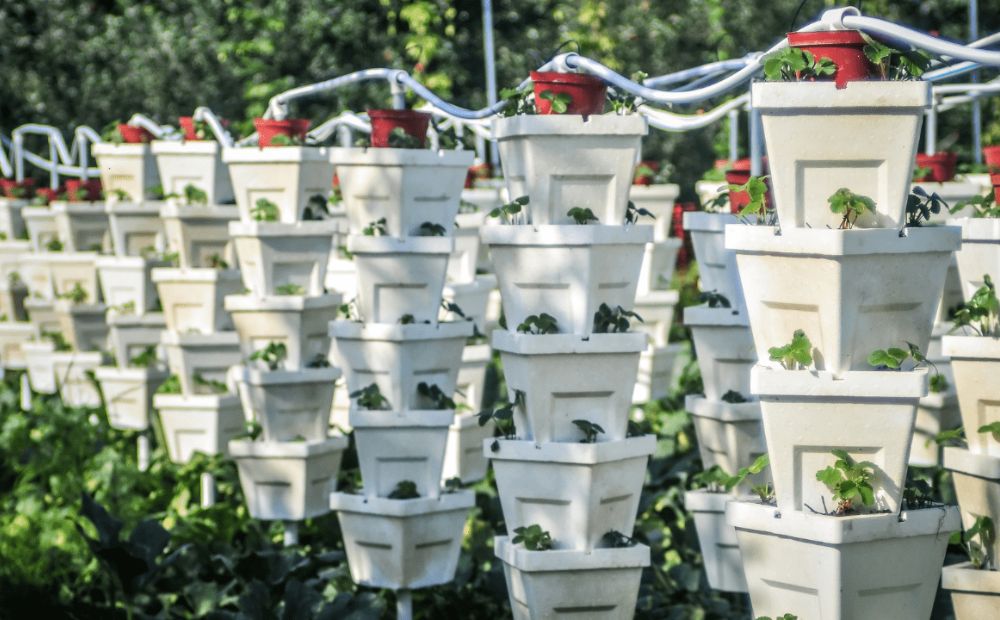
Alright, green friends, let’s chat about one of the most exciting parts of setting up a vertical garden – picking your plants! This isn’t just about what looks pretty (though that’s definitely a part of it). It’s about finding the right plant buddies that will thrive in your vertical space.
The Beauty of Plant Diversity
Here’s where the fun begins. Vertical gardens are like a canvas for plant diversity. You can mix and match to your heart’s content – think trailing plants like sweet ivy, vibrant flowers, or even your favorite herbs. The key is to choose plants that suit the light and temperature conditions of your chosen spot.
Functional Meets Aesthetic
Now, imagine stepping out onto your balcony to pluck some fresh basil and mint for your dinner – how cool would that be? Vertical gardens are not just about looks; they’re about utility too. You can grow a variety of herbs, small veggies, and even some fruit! And let’s not forget the sensory experience – the fragrance of fresh herbs, the texture of different leaves, and the pop of color from flowers.
Tailoring to Your Environment
Consider this: not all plants are made for the high life of vertical gardening. Some need more root space, while others are just right for those cozy vertical spots. For instance, succulents are great if you’re a bit forgetful about watering. They’re like the laid-back friends who don’t need much but still bring joy.
A Little Tip
When you’re choosing plants, think about how they’ll grow over time. Will they dangle down beautifully? Will they stay compact and neat? This isn’t just about how they’ll look now, but how they’ll evolve in your space. It’s like planning a little future for your garden.
Wrapping It Up
So, picking your plants is a bit like setting up a team. You want a mix that works well together, suits the environment, and brings you joy. Whether it’s for their beauty, their taste, or just the sheer joy of watching them grow, the right plants will make your vertical garden a true slice of paradise.
Stay tuned, as next we’ll dive into the world of soil – not all dirt is created equal, especially in vertical gardening! Happy plant picking! 🌱💚
Using High-Quality Soil

Hey there, plant enthusiasts! Now that we’ve got our location pinned down and our plant buddies picked out, it’s time to talk about something that’s often overlooked but super crucial – the soil. Yep, that’s right, we’re diving into the dirt!
The Lowdown on Soil Importance
So, why is soil such a big deal in vertical gardening? Well, think of soil as the foundation of your garden – it’s where all the magic happens. In vertical gardens, our green friends don’t have the luxury of spreading their roots far and wide like they would in the ground. So, the soil we provide needs to be top-notch.
Root Health Optimization
Here’s a unique twist: in vertical gardens, the health of the plant roots is super important. Why? Because they’re working in a more confined space. We need soil that keeps roots happy – meaning it needs to be well-draining yet moisture-retentive, nutrient-rich, and just the right texture. It’s like creating a cozy, nutritious bed for your plants.
Choosing the Right Mix
Not all soil is created equal, especially for vertical gardens. You’ll want to look for a high-quality potting mix that’s designed for container gardening. These mixes usually contain a blend of peat moss, vermiculite, or perlite, and compost or other organic matter. This combo provides a light, airy environment for roots, which is just what they need in a vertical setup.
A Little Tip
If you’re feeling adventurous, you can even mix your own soil. It’s like being a chef for your plants! A general recipe is one part peat moss or coconut coir, one part perlite or vermiculite, and one part compost. Just mix it up, and voilà – gourmet soil for your vertical garden.
Wrapping It Up
So, remember, the right soil is like a good home for your plants. It supports their growth, provides nutrients, and keeps them healthy and strong. With the perfect soil mix, your vertical garden will not just survive, but thrive!
Up next, we’ll explore the world of watering – it’s not just about pouring water on your plants, there’s an art to it! Stay tuned, and let’s keep our green friends happy! 🌻🌼🌿
Ensuring Proper Watering
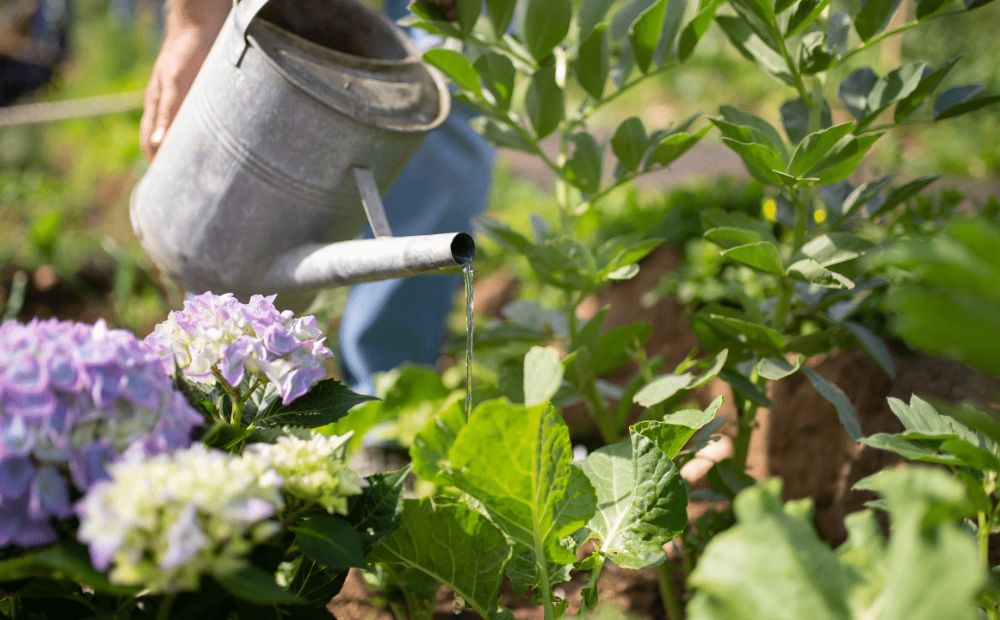
Hey again, garden gurus! Let’s dive into a topic that’s vital for keeping your vertical garden lush and thriving – watering. It might sound simple, but there’s a bit of an art to it, especially when you’re dealing with plants in a vertical setup.
The Art of Watering in Vertical Gardens
In a vertical garden, water doesn’t behave quite the same way as it does in a traditional garden bed. Gravity is at play here, pulling water down faster than in horizontal soil. This means the top of your garden might dry out quicker than the bottom. Keeping this balance is key to happy, hydrated plants.
Innovative Irrigation Solutions
Now, here’s where we can get a bit techy and creative. Drip irrigation systems are fantastic for vertical gardens. They deliver water right where it’s needed – at the roots – and keep the moisture level consistent. Plus, they’re water-efficient, which is great for the environment and your water bill.
If you’re not into drip systems, self-watering planters can be a great alternative. They have reservoirs that allow plants to drink up as needed, which is super handy if you’re worried about over or under-watering.
A Little Tip
For those who love a bit of DIY, you can set up a simple bottle drip system. Just take some old plastic bottles, poke a few holes in them, and bury them slightly in the soil near your plants. Fill them with water, and let gravity do the rest. It’s a neat little trick that’s eco-friendly and effective.
Monitoring Moisture Levels
One of the keys to successful watering is keeping an eye on moisture levels. The finger test is an old but gold method – stick your finger into the soil about an inch deep. If it feels dry, it’s time to water. If it’s moist, you’re good to go.
Wrapping It Up
So, watering in a vertical garden isn’t just about splashing some water around. It’s about understanding how water travels through your garden and making sure each plant gets just what it needs. With the right watering strategy, your vertical garden will be a verdant, thriving oasis.
Coming up next, we’ll talk about the importance of choosing the right support for your vertical garden. It’s not just about holding your plants up; it’s about creating a safe and sustainable growing environment. Stay tuned! 💧🌱🌺
Considering Weight and Support

Hello again, vertical garden visionaries! Now, let’s tackle a topic that’s literally about the backbone of your vertical garden – its support structure. This is where we ensure our green dreams don’t come crashing down!
The Gravity of the Situation
When we go vertical, we’re defying gravity, and that means we need to think about weight. Soil, water, and plants can get heavy, and the last thing we want is our garden collapsing. So, the support system isn’t just a frame for your plants; it’s a crucial element that ensures the safety and longevity of your garden.
Structural Integration and Safety
If you’re attaching your garden to a wall or a fence, it’s essential to make sure it can handle the weight. This might mean consulting with a professional for wall-mounted systems, especially if you’re in an apartment or dealing with an older building. Safety first, always!
For freestanding structures, like plant stands or trellises, stability is key. You want something that won’t topple over in the wind or under the weight of your flourishing garden.
Material Matters
The materials you choose for your support system are also important. They need to be durable and able to withstand the elements, especially if your garden is outdoors. Wood, metal, and certain plastics are popular choices, each with its own benefits and aesthetic appeal.
A Little Tip
When planning your support structure, think about the future growth of your plants. Will the structure support them as they grow bigger and heavier? It’s like planning a house – you want room for everyone to grow and flourish.
Wrapping It Up
So, remember, a strong and stable support system is the unsung hero of your vertical garden. It’s not just about holding your plants up; it’s about creating a safe and sustainable space for your garden to thrive. With the right support, your vertical garden will be both a beautiful and secure addition to your space.
Next, we’ll explore how to maximize your space efficiently, making the most of every inch for a lush and productive vertical garden. Stay tuned for more green goodness! 🌿
Maximizing Space Efficiently
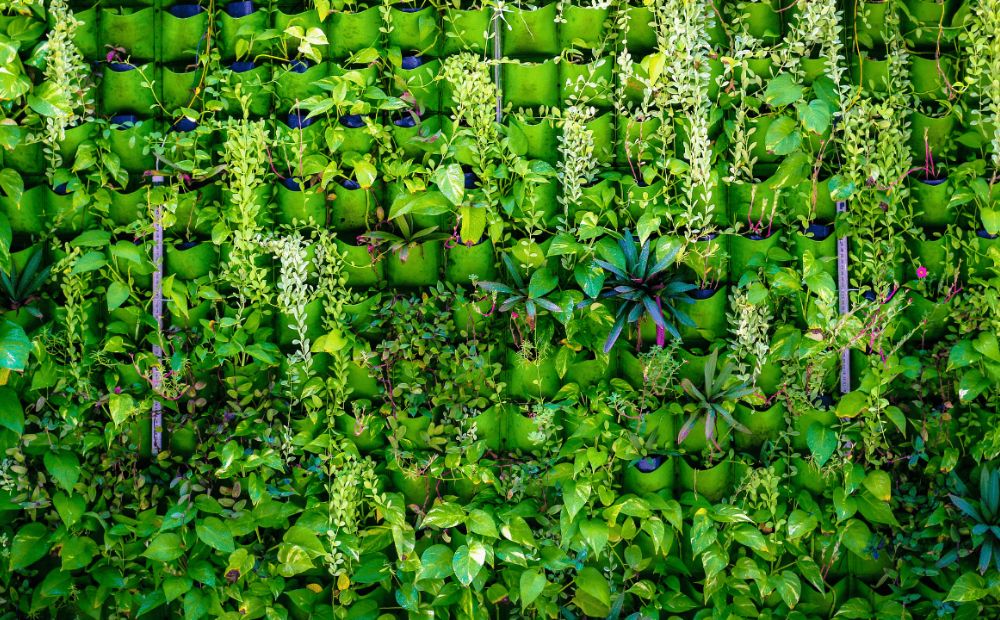
Hey there, urban jungle creators! Let’s chat about one of the coolest aspects of vertical gardening – making the most out of every inch of space. Whether you’re working with a tiny balcony or a blank wall, vertical gardening is all about thinking up, not out.
The Art of Space Utilization
Vertical gardening is a bit like playing Tetris with plants. It’s about finding creative ways to fit your plants into the space you have, but also allowing them room to grow and thrive. This is where your inner designer can shine – it’s about creating a living mosaic that’s both functional and beautiful.
Creative Upcycling for Planters
Now, here’s where we can get really creative and eco-friendly. Upcycling is not just a trend; it’s a smart way to repurpose materials for your garden. Old pallets, plastic bottles, shoe organizers, and even discarded drawers can be transformed into unique planters. This not only saves these items from the landfill but also adds a unique character to your garden.
Imagine a wall of green in old, colorful rain boots, or a hanging garden in repurposed mason jars. The possibilities are endless, and each adds a story to your garden space.
Vertical Planting Techniques
There are so many ways to go vertical – trellises, hanging baskets, wall-mounted planters, and tiered shelves, to name a few. Each has its own charm and functionality. For instance, trellises are great for climbing plants like ivy or certain vegetables, while shelves might be better for smaller potted plants or herbs.
A Little Tip
When planning your space, think about the visual appeal as well as plant health. Mixing plants of different heights, colors, and textures can create a visually stunning display. Also, consider how easy it is to access each plant for watering and care – you don’t want to create a beautiful garden that’s a headache to maintain.
Wrapping It Up
Maximizing space in vertical gardening is about being resourceful and imaginative. It’s about seeing potential in every inch and every object. With a bit of creativity, you can transform even the smallest space into a lush, thriving garden.
Coming up, we’ll delve into the world of fertilizing – it’s not just about feeding your plants, but nourishing them for peak health and beauty. Stay tuned for more green insights! 🌱👩🌾🌿
Fertilizing Regularly

Hello, plant pals! Now, let’s get into a topic that’s crucial for the health and vibrancy of your vertical garden: fertilizing. Just like us, plants need a balanced diet to thrive, and in a vertical garden, where soil volume is limited, this becomes even more important.
Nourishing Your Vertical Garden
In vertical gardens, plants don’t have the luxury of spreading their roots far and wide to search for nutrients. They rely on what’s available in their immediate environment. This is why providing the right nutrients, in the right amounts, becomes a key part of your gardening routine.
Tailored Nutrient Management
Each plant in your vertical garden might have different nutritional needs. Some might be heavy feeders, while others are more low-maintenance. The beauty of vertical gardening is that you can tailor your fertilizing approach to meet these varied needs. It’s like being a personal chef for your plants!
Choosing the Right Fertilizer
There’s a wide array of fertilizers out there – organic, inorganic, liquid, granular, slow-release… the list goes on. For vertical gardens, liquid fertilizers often work well as they’re easy to apply and can be quickly absorbed. Organic options like seaweed extracts or fish emulsion are great for providing a gentle, nutrient-rich boost.
A Little Tip
When applying fertilizer, it’s better to err on the side of caution. Over-fertilizing can be just as harmful as under-fertilizing. A good rule of thumb is to fertilize little and often. Also, make sure to follow the instructions on the fertilizer’s label – they’re there for a reason.
Wrapping It Up
Regularly fertilizing your vertical garden is like giving your plants a consistent, balanced diet. It keeps them healthy, helps them grow, and ensures they have the energy to produce lush foliage and vibrant blooms. With the right fertilizing strategy, your vertical garden will not just survive, but flourish!
Up next, we’ll talk about pruning and maintaining your vertical garden. It’s not just about keeping things tidy; it’s about encouraging healthy growth and longevity. Stay tuned for more green-thumb tips! 🌼🌿💚
Pruning and Maintaining
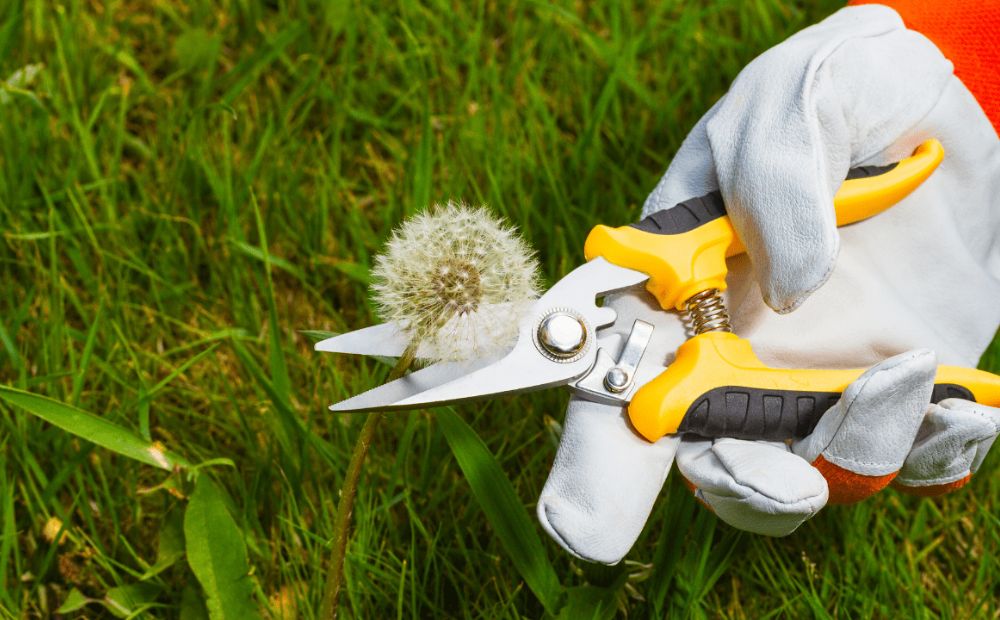
Hey there, vertical green thumbs! Let’s roll up our sleeves and talk about pruning and maintaining your vertical garden. This isn’t just about making your garden look neat; it’s about keeping your plants healthy, encouraging growth, and preventing any pesky problems.
The Importance of Regular Pruning
In the vertical world, space is at a premium. Plants growing too close can create a jungle where moisture and pests might hide, and sunlight can’t reach. Regular pruning helps manage this growth, ensuring each plant has its place to shine.
Sculptural Art Forms
Here’s where your artistic side comes into play. Pruning in a vertical garden can be like sculpting – you’re shaping your plants, creating patterns, and defining spaces. It’s not just gardening; it’s creating living art. You can guide vines to grow in certain directions, trim foliage to reveal beautiful flowers, or create a lush, green backdrop.
Maintenance for Plant Health
Beyond aesthetics, pruning is vital for plant health. Removing dead or diseased foliage keeps your plants healthy and prevents the spread of problems. It also encourages new growth – think of it as giving your plants a little pep talk to grow more vigorously.
A Little Tip
When you’re pruning, always use clean, sharp tools. This makes cleaner cuts that heal faster and reduces the risk of spreading disease. And remember, the best time to prune is when your plants are dormant or just after they’ve finished a growth spurt.
Wrapping It Up
Regular maintenance, including pruning, is key to a thriving vertical garden. It keeps your garden looking great, your plants healthy, and can even turn your space into a living piece of art. With a little time and care, your vertical garden will continue to be a source of joy and beauty.
Next, we’ll explore the world of pest and disease management. It’s not the most glamorous part of gardening, but it’s crucial for keeping your vertical oasis vibrant and healthy. Stay tuned for more insights! 🌱✂️🌿
Monitoring for Pests and Diseases

Hello again, vertical garden enthusiasts! Now, let’s tackle a less glamorous but absolutely essential aspect of maintaining a healthy vertical garden: keeping an eye out for pests and diseases. Vigilance is key to ensuring your garden remains a thriving, healthy ecosystem.
The Battle Against Pests and Diseases
In the cozy confines of a vertical garden, pests and diseases can sometimes feel like they’re playing a game of hide and seek. The dense foliage and limited airflow can create hotspots for unwanted guests. Regular monitoring is crucial to catch any issues early before they become big problems.
Ecosystem Balance
Here’s a fascinating angle: your vertical garden is more than just a collection of plants; it’s a mini ecosystem. This means you can use nature to your advantage. Encouraging beneficial insects like ladybugs or bees can help keep the pest population in check. It’s about creating a natural balance that keeps everyone happy – plants and pollinators alike!
Identifying Common Culprits
Knowledge is power when it comes to pests and diseases. Familiarize yourself with common issues like aphids, spider mites, and fungal infections. Each has its telltale signs, like discolored leaves, sticky residue, or powdery spots. The sooner you spot these signs, the sooner you can take action.
A Little Tip
Prevention is often the best cure. Keeping your plants healthy with proper watering, feeding, and pruning goes a long way in preventing outbreaks. Also, consider using natural remedies like neem oil or insecticidal soaps, which can be effective without harming the environment.
Wrapping It Up
Monitoring for pests and diseases might not be the most fun part of vertical gardening, but it’s essential for a healthy garden. With regular checks and prompt action, you can keep your vertical garden a lush, pest-free paradise.
Coming up next, we’ll dive into the final tip – experimenting and adapting. It’s all about embracing the unique journey of your vertical garden and learning as you grow. Stay tuned for the grand finale! 🌼🐞🌿
Experimenting and Adapting
Hey there, fellow vertical garden adventurers! We’ve arrived at our final tip, and it’s all about embracing the spirit of experimentation and adaptation in your vertical gardening journey. Remember, every garden is unique, and there’s always room for a little bit of playful trial and error.
The Joy of Experimentation
Your vertical garden is a living canvas, and you’re the artist. Feel free to try different plant combinations, rearrange your layout, or test out new gardening techniques. Maybe it’s a new type of planter, a different watering system, or an exotic plant you’ve never tried before. Each choice you make adds to your experience and knowledge.
Tailoring to Your Environment
Every space has its quirks – a spot that gets more sun, a wall that’s a bit shadier. Observing how your garden responds to these conditions and adapting your approach is key. Maybe those sun-loving plants need to move higher, or the shade-dwellers need a bit more cover. It’s all about tuning in to your garden’s needs.
Learning from Challenges
Not every experiment will be a success, and that’s okay! Each challenge is an opportunity to learn and grow (pun intended). Did a plant not thrive where you thought it would? Did a DIY irrigation hack not work out? No problem. Take notes, learn, and try something different next time.
A Little Tip
Keep a garden journal. Jot down what you plant, where you plant it, and how it does. Note the changes you make and the results you see. This can be a fantastic resource as you refine your gardening strategies over time.
Wrapping It Up
Embracing experimentation and adaptation in your vertical garden is about enjoying the journey as much as the destination. It’s about personalizing your space, learning from your experiences, and watching your garden evolve over time. So go ahead, try new things, and watch your garden – and your skills as a gardener – flourish!
And there you have it, folks – ten essential tips to guide you on your vertical gardening adventure. From choosing the right location to embracing experimentation, each step is a chance to grow, learn, and create something truly beautiful. Happy gardening! 🌱🎨🌿
Conclusion
Well, my fellow plant lovers, we’ve journeyed through the ups and downs (quite literally) of vertical gardening. As we wrap up, let’s take a moment to reflect on what we’ve learned and look forward to the lush vertical gardens we’re going to cultivate.
The Vertical Gardening Adventure
Vertical gardening isn’t just about saving space; it’s a creative and sustainable approach to bringing more green into our lives, especially in urban environments. We’ve explored how to choose the perfect location, select the right plants, and ensure they have the best soil and nutrients to thrive. We’ve discussed the importance of watering techniques, the necessity of a sturdy support system, and the art of maximizing space.
More Than Just Gardening
But it’s more than just gardening, isn’t it? It’s about creating ecosystems, sculpting living art, and being mindful of our environment. It’s about the satisfaction of nurturing something and watching it grow. Each vertical garden is unique, reflecting the personality and care of its gardener.
Embracing Challenges and Celebrating Successes
Remember, every garden has its challenges, but each challenge is an opportunity to learn and grow. Your vertical garden will evolve over time, and so will your skills as a gardener. Celebrate the small victories – that first bloom, the successful harvest of herbs, or the simple joy of seeing your garden thrive.
A Final Thought
As we conclude, I encourage you to embrace vertical gardening as a journey of discovery and creativity. Whether you’re a seasoned gardener or a curious beginner, there’s always something new to learn and explore. So, grab your gardening tools, let your imagination run wild, and transform your space into a vertical wonderland.
Happy vertical gardening, everyone! May your walls be ever green, and your spirits ever high. 🌿🌺🌞
References and Further Reading
As we close the book on our vertical gardening guide, I want to leave you with some resources for further exploration. Gardening is a journey of continuous learning, and there’s always more to discover. Here are some references and reading materials that can help you deepen your knowledge and inspire your vertical gardening adventures.
Books and Guides
- “Vertical Gardening: Grow Up, Not Out, for More Vegetables and Flowers in Much Less Space” by Derek Fell: This book is a great starting point for anyone interested in vertical gardening, offering practical advice and creative ideas.
- “The Vertical Garden: From Nature to the City” by Patrick Blanc: Written by the pioneer of the modern vertical garden, this book delves into the art and science of vertical gardens in urban spaces.
- “DIY Vertical Gardens: Expert Advice for Green Walls and Living Walls at Home” by Leigh Clapp and Hattie Klotz: A fantastic resource for DIY enthusiasts, this book provides step-by-step guides for creating your own vertical gardens.
Section 12: References and Further Reading
As we close the book on our vertical gardening guide, I want to leave you with some resources for further exploration. Gardening is a journey of continuous learning, and there’s always more to discover. Here are some references and reading materials that can help you deepen your knowledge and inspire your vertical gardening adventures.
Books and Guides
- “Vertical Gardening: Grow Up, Not Out, for More Vegetables and Flowers in Much Less Space” by Derek Fell: This book is a great starting point for anyone interested in vertical gardening, offering practical advice and creative ideas.
- “The Vertical Garden: From Nature to the City” by Patrick Blanc: Written by the pioneer of the modern vertical garden, this book delves into the art and science of vertical gardens in urban spaces.
- “DIY Vertical Gardens: Expert Advice for Green Walls and Living Walls at Home” by Leigh Clapp and Hattie Klotz: A fantastic resource for DIY enthusiasts, this book provides step-by-step guides for creating your own vertical gardens.
Online Resources
- Vertical Garden Institute: An online platform offering courses, articles, and resources dedicated to vertical gardening techniques and designs.
- Gardeners’ World – Vertical Gardening: A section on the Gardeners’ World website that provides tips, tricks, and inspiration for vertical gardening.
- YouTube Channels: Channels like “Epic Gardening” and “Garden Answer” often feature vertical gardening projects, offering visual guides and practical tips.
Community Forums and Social Media
- Gardening Forums: Online communities like GardenWeb or the Gardening section of Reddit can be great places to ask questions, share experiences, and connect with other gardening enthusiasts.
- Instagram and Pinterest: These platforms are full of inspirational ideas and images for vertical gardening. Search for hashtags like #VerticalGardening or #GreenWall for a wealth of creative ideas.
Local Gardening Clubs and Workshops
- Community Gardening Clubs: Joining a local gardening club can provide hands-on experience and advice from fellow gardeners.
- Workshops and Seminars: Keep an eye out for local workshops or seminars on vertical gardening. These can be great opportunities to learn from experts and network with other gardeners.
- Where You Can Buy the Best Seeds for Your Garden:
With these resources at your fingertips, you’re well-equipped to dive deeper into the world of vertical gardening. Remember, gardening is a personal journey, and there’s no single “right” way to do it. Explore, experiment, and most importantly, enjoy the process. Happy gardening! 📚🌱🌻

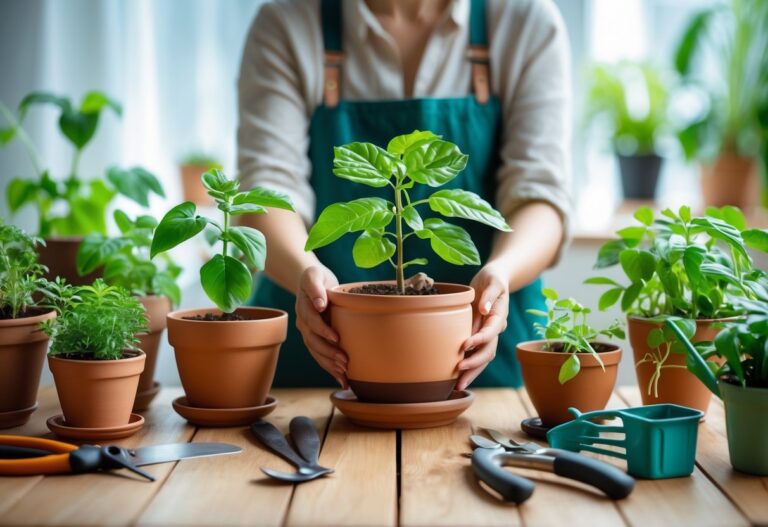

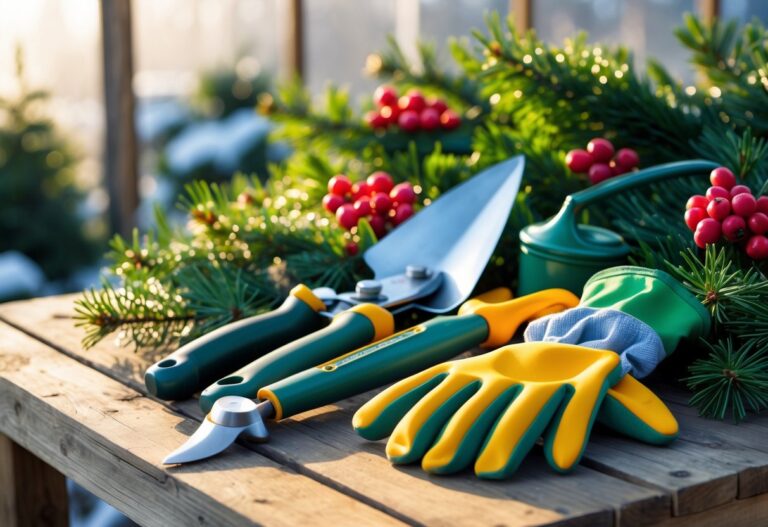
[…] 10 Best Tips for Vertical Gardening […]